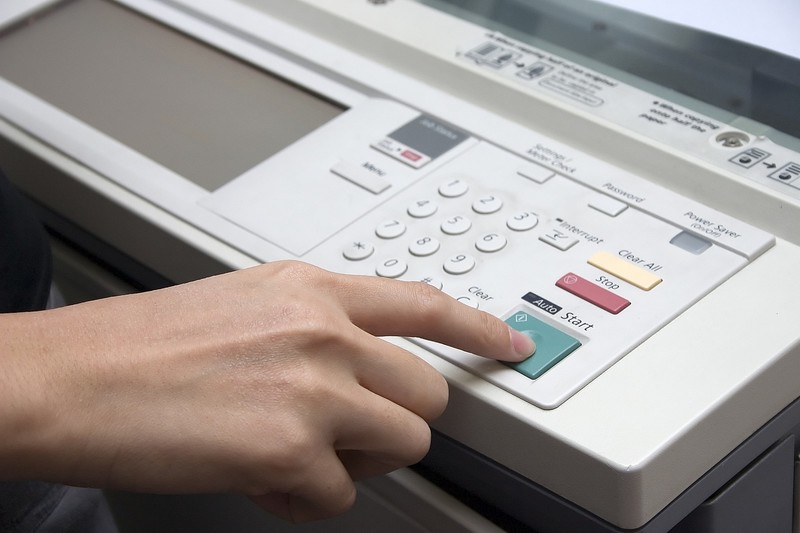It’s easy to figuratively “grease the wheels” of your operation when those wheels are squealing in your ear every day. But there are likely several processes in your business that are silently shrieking for a little WD‑40. Most of our clients are experts in their fields and not in document services operations, so they might not even be aware of inefficiencies at their offices. Here are four ways to boost your office’s productivity by paying closer attention to print operations.

© Can Stock Photo / kiankhoon
- Implement rules-based printing. Nobody likes rules, unless those rules will save you a bunch of cash, and that’s exactly what rules-based printing can do. Speak with your managed print services provider or Avalon about running an analysis on print jobs at your office to get some real numbers. This type of printing is exactly how it sounds—rules are created that should deter team members from printing high volumes of documents on a desktop printer by alerting them of what hitting print will actually cost the company, or by prompting them for a cost center or client number when printing jobs over a preset threshold in order to help the company recover those expenses. Hopefully, they’ll second guess printing that casserole recipe in full color once they know what it will cost. Setting some rules for how technology is used around the office can heighten awareness of expenses and save you significant costs.
- Consider managed office services. Managed office services means different things for different companies. At Avalon, managed office services means a turnkey solution to back-office support services. That includes just one aspect of what other companies may consider managed office services: a maintenance contract on all your printers. Like a maintenance contract on your copiers, this outsources the responsibility of repairing printers, toner for printers, and (depending on the provider) this may even include no‑cost replacement of desktop printers when they go caput. The technology used to manage these functions is quite impressive and is often the basis for setting up the rules‑based printing. Remote, real‑time monitoring of toner needs and preemptive shipping to those users, proactive and reactive repairs, and maintenance all lead to smoother more efficient operations. It also provides a very predictable cost structure that can help the accounting team budget for related expenses that may have been impossible to do so in the past. Instead of waiting for your engine to seize because you haven’t checked the oil in a year, keep an eye on it and get it tuned up regularly.
- Consolidate and optimize. It may seem more efficient to give every team member a desktop printer, but the more printers you have, the more costly and, quite frankly, annoying it can be. We regularly run analyses on print volumes that show some people use their printers for 10 pages a month and others for 10,000 pages per month. Understanding what drives volumes and strategically placing appropriately sized equipment around the office can reduce the number of printers needed. It can also provide more robust, faster equipment close to those people who genuinely need it. Instead of giving everyone a Chevy, give some people a Maserati and others a bicycle, and you’ll be able to reduce costs and increase productivity.
- Hold and release. A common complaint we hear is that people print items and walk to the copier to pick it up to find out it has either printed in the middle of someone else’s print job, or someone else walked away with their print job creating lots of confusion, frustration, and reprinting of documents. Most providers can set up a print and release function for you. This allows you to print your document and send it to a queue at a copier, but hold it until you arrive and, perhaps, enter a personal code or swipe your keycard, releasing the actual print job. No more tracking down your prints and no more reprinting the lost documents. This is useful for offices that regularly print confidential documents and have desktop printers so that a top-secret file doesn’t accidentally get in the wrong hands. A hold and release program will help minimize inefficient reprinting and tracking documents and provide a heightened level of security for those confidential documents. Think of this like getting a valet at your favorite restaurant rather than wandering the parking lot trying to remember where you parked.
These are four great ways to grease the wheels of your operations without having to call in an outside consultant or vendor, but you can certainly speed up the process by calling an expert for advice. While some of these items may seem like they would add only a small level of improvement, you might be surprised at the impact that just a few changes can have on your overall efficiency. Interested in some more details in any of these areas? Reach out to us—we love talking about this stuff. And cars. If you couldn’t tell.
Ever wonder what it would be like to not think about your office operations? Take a look:
Featured Thumbnail Image: © Can Stock Photo / devon





